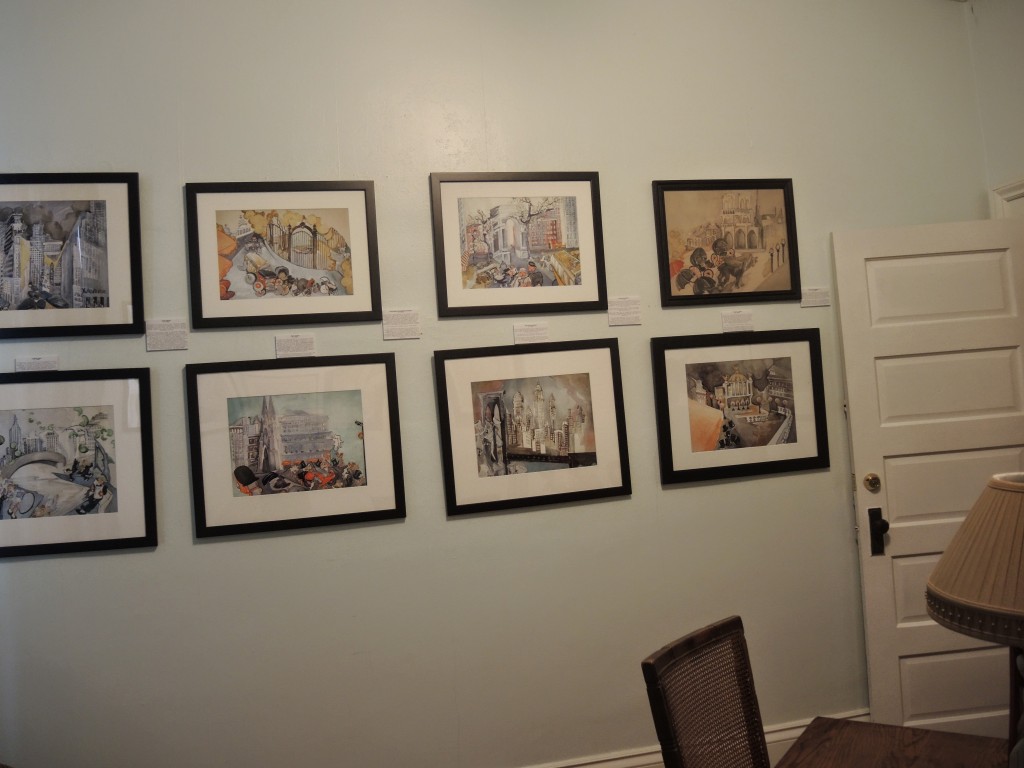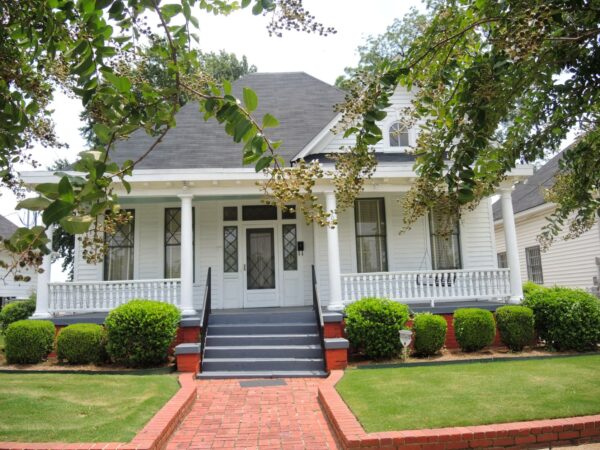For most of the day, I’d be an hour early. I left New Orleans as I’d hoped just a few minutes before the clock struck 07:00 Thursday and, for the first time in nearly three weeks, most of my driving would be on Interstates. The reason I wanted to leave at such an early hour had nothing to do with the prospect of encountering any measurable New Orleans rush hour slowdowns. I assumed that traveling east away from the city center meant I’d be navigating against the general traffic flow. The true determinant was my planned visit with my sister and family in Atlanta.
Even though I knew my overnight stay would be brief because I’d want to make another early start Friday morning, I still wanted to maximize my “awake” time with them. However, since New Orleans is in the central time zone and Atlanta in the eastern time zone, this equated my departure time to 08:00. Thus, until I entered Georgia, I’d need to mentally advance my clock an hour whenever I checked my progress. According to Google maps, a direct, rest stop only drive from New Orleans to Atlanta is about 470 miles and should require about seven hours. But the route also passes through or near Montgomery, Alabama. By now, anyone reading this tome who knows a bit about the American Civil Rights Movement, or a lot of trivia about American literature, and who thinks I would make a rest stop only drive simply hasn’t been paying attention.
In planning the trip, I anticipated feeling some desire to get home after nearly three weeks of driving and touring. Otherwise, I would likely have set aside time to visit Selma where I would have, among other things, crossed the Edmund Pettus Bridge. But I chose home over a night in Alabama. It’s also likely I’d have left time to stop in Georgiana, Alabama to visit the boyhood home of Hank Williams. In fact, the stretch of I-65 near Georgiana is called the Hank Williams Memorial Lost Highway and, of course, there’s another Hank Williams home in the city of Montgomery. But I chose home over Hank Williams and a night in Alabama.
Although it has broad geographic boundaries (Montgomery is more than twice as large as Washington, DC) the sites I wanted to visit are clustered in a relatively small area so the order in which I chose to visit them seemed inconsequential. As you will see, this might or might not have been the case. 
I made my first stop in Montgomery at the home of F. Scott and Zelda Fitzgerald. The Fitzgeralds lived in this house for just a year or two – 1931 and 1932. Surprisingly, the home is the only museum in the world dedicated to the two of them. I can connect to the Fitzgeralds in several ways. First, F. Scott Fitzgerald was born and spent much of his youth in St. Paul, Minnesota – an early stop for me on this journey. Second, he and Zelda lived in Baltimore, the city of my birth and youth, for about five years. And, of course, they’re buried at St. Mary’s Church in Rockville less than eight miles from my house in Silver Spring.
In fact, on the advice of Fitzgerald’s first editor H.L. Mencken, it was to Baltimore they moved after leaving their home in Montgomery. Mencken suggested this after Scott wrote to him of Zelda’s worsening bouts with her schizophrenia. Fitzgerald himself wasn’t faring much better. Tender is the Night was still incomplete and he hadn’t published a novel since The Great Gatsby some six years earlier. His income was greatly reduced and the family was falling into debt.
Mencken had recommended that Zelda come to Baltimore for treatment of her mental illness at Johns Hopkins’ Phipps Clinic thought to be among the best in the country. Zelda also spent a significant amount of time at the Sheppard-Pratt Clinic just outside the city. The Fitzgeralds and their daughter Scottie spent nearly five years in Baltimore though father and daughter returned occasionally to Montgomery. Working in Baltimore, Scott published many of the short stories that provided much of his income during this period. He also finished Tender is the Night though the novel’s early financial and critical reception disappointed him. Zelda also wrote and published her only novel Save me the Waltz – a thinly veiled account of the Fitzgeralds’ marriage – during their time in Baltimore.
Zelda was born Zelda Sayer in Montgomery in 1900. She was the youngest of five children and, as the daughter of an Alabama Supreme Court judge, lived through her childhood in Alabama’s capital city. However, according to material at the museum, this house that the Fitzgeralds shared is the only surviving structure where either lived in Montgomery. In addition to being a novelist, Zelda was also a playwright and painter. The day of my visit, the museum had recently acquired several of Zelda’s paintings and was in the midst of a reception to celebrate that fact.  I wandered around and snapped some photos before discreetly exiting prior to the commencement of the function to which I had not been invited.
I wandered around and snapped some photos before discreetly exiting prior to the commencement of the function to which I had not been invited.
Before I left, the genial docent handed me a brochure for the Southern Literary Trail which prompted a self dope slap as I walked to my car. The brochure reminded me that Tennessee Williams had spent much of his childhood in Clarksdale, Mississippi. D’oh!
From the Scott and Zelda Fitzgerald home, my next planned stop was the Dexter Avenue Parsonage. Martin Luther King, Jr. lived in this house from 1954 to 1960 while he was pastor at the Dexter Avenue Baptist Church. King assumed that position at age 25 so these years likely played a critical role in the development of his philosophy. Sadly, for me, though the house and interpretive center are, according to the sign, open Tuesday through Saturday between 10:00 am and 4:00 pm, they were closed when I arrived at about 11:25 Thursday morning. This meant I could only manage a few exterior photos.

Were they on an early lunch? Was someone out sick? Would this place have been open had I gone there first? Would it open if I waited a few minutes? These questions would remain unanswered – particularly the latter since I had no time in my budget to wait. But a few stops remained and you can read about them and see more photos in the next post.
Note: In keeping with my 2022-2023 reformation of the blog into shorter entries, backdated to maintain their sequence, any comments on this post might pertain to its new configuration. See the explanation in the post Conventions and Conversions.
Thankyou for the photos of the National Civil Rights Museum. What a great idea for the Wall of Tolerance. I find it mindboggling that we still have such deeply ingrained racism in the US while we also have at the same time, deeply held convictions by some that there is “no more discrimination”… (which, by the way, includes 5 of our Supreme Court Justices).
Thank you for this, Todd.
Dear Todd: Thank you for the privilege of sharing your adventures through this erudite and entertaining blog. As always, there is much that I would love to continue to discuss with you. I hope that some creative and enthusiastic teachers/mentors might happen upon this wonderful treasure and use it to guide so many invaluable lessons in life, tolerance, literature, music, geography, philosophy, and anything else that we pupils need to make our world a better place.
I appreciate your appreciation.
Todd, This was very nicely done. You undertook the formidable and generous effort of sharing and presenting to your friends this fascinating American travel excursion. We got to see our country’s geography and history through your kind and thoughtful mental lens. Thank you.